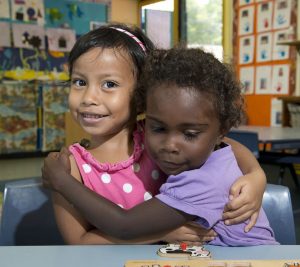Diversity is important because early childhood classrooms are becoming more diverse in various ways: Cultural, racial, physical, religious beliefs, languages, and family dynamics to name a few. However, I feel that there is not always adequate diversity displayed and shared with young children. At this point, we as early childhood educators have to ask ourselves why our classrooms are not promoting diversity. Is it because we do not always understand different cultures and races? One way to learn about different cultures and races within the center is to have family members share their customs daily through their interactions within the classroom if available. If this option is not available then contact organizations or community leaders to come into the classroom and share with the children.
Diversity must be incorporated into the early childhood curriculum. When teachers are planning their curriculum and activities they must integrate elements that focus on educating children about racial and cultural diversity. Teachers should discuss topics regarding cultural differences with young children in an inclusive and supportive manner.
Children and teachers can explore various cultures and languages through print, speech, dress, stories, and customs. Programs may focus on a different culture each week. A classroom where the staff and children are enjoying an enriched environment that caters to various cultures will generate awareness for the staff, students, and parents.
Activities should be introduced into the classrooms that promote diversity in a positive fashion through the following:
- Literacy/story telling: labels in both the child’s native language and English and reading stories to the children.
- Arts and crafts projects with material from various cultures.
- Cooking experiences with various foods from other cultures.
- Dramatic play: dress up clothes in the dramatic play area, dolls with different skin tones, and hair textures.
- Circle time: Finger plays, games, Parents, family members, and speakers from different cultures and races can come in and read stories in different languages or about different cultures.
- Dance and movement: playing music and singing songs
- Celebrations: If you are incorporating celebrations you do not have to have them only when they are scheduled. Especially if your program does not run year round.
Programs that are racially and culturally sensitive provide the support that children need to grow and mature with a sense of acceptance as well as feeling accepted. It is important to recognize that if we teach children when they are young to accept others, the world will be a much better place. Knowledge and exposure are the true keys to reducing all forms of prejudice.
For additional information on incorporating diversity into your classroom click on the link http://www.drthomasa.com/promoting-diversity-within-the-early-childhood-classroom/

